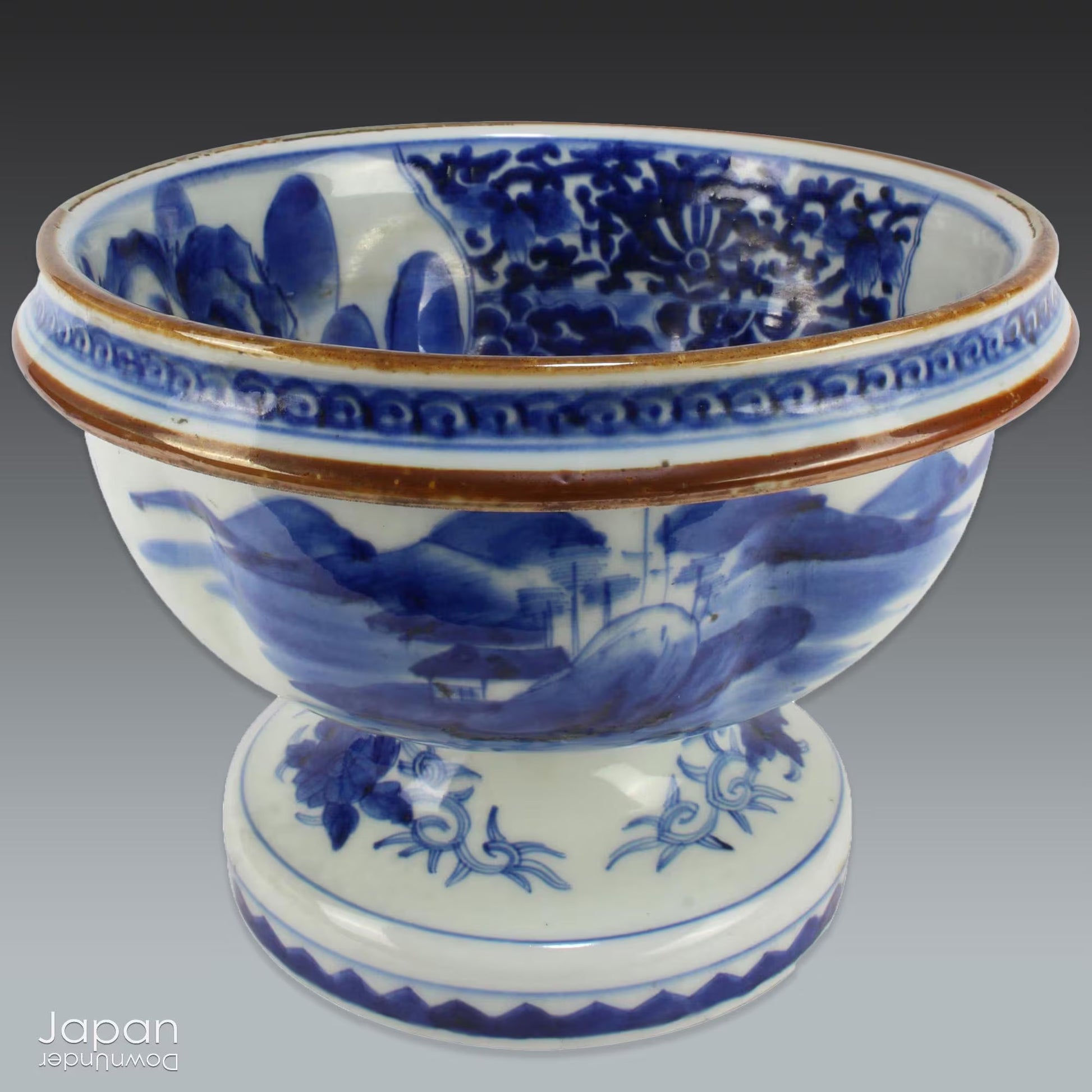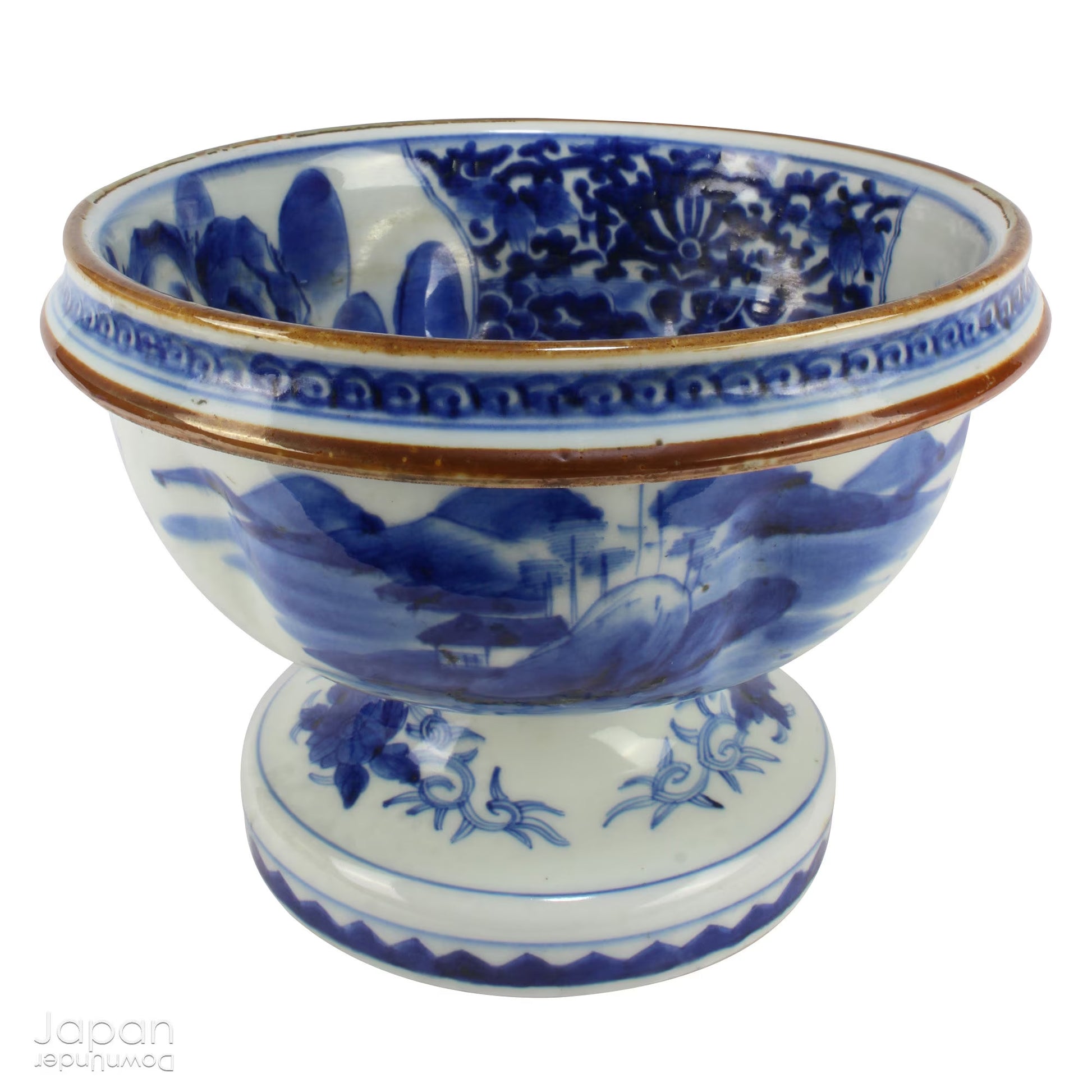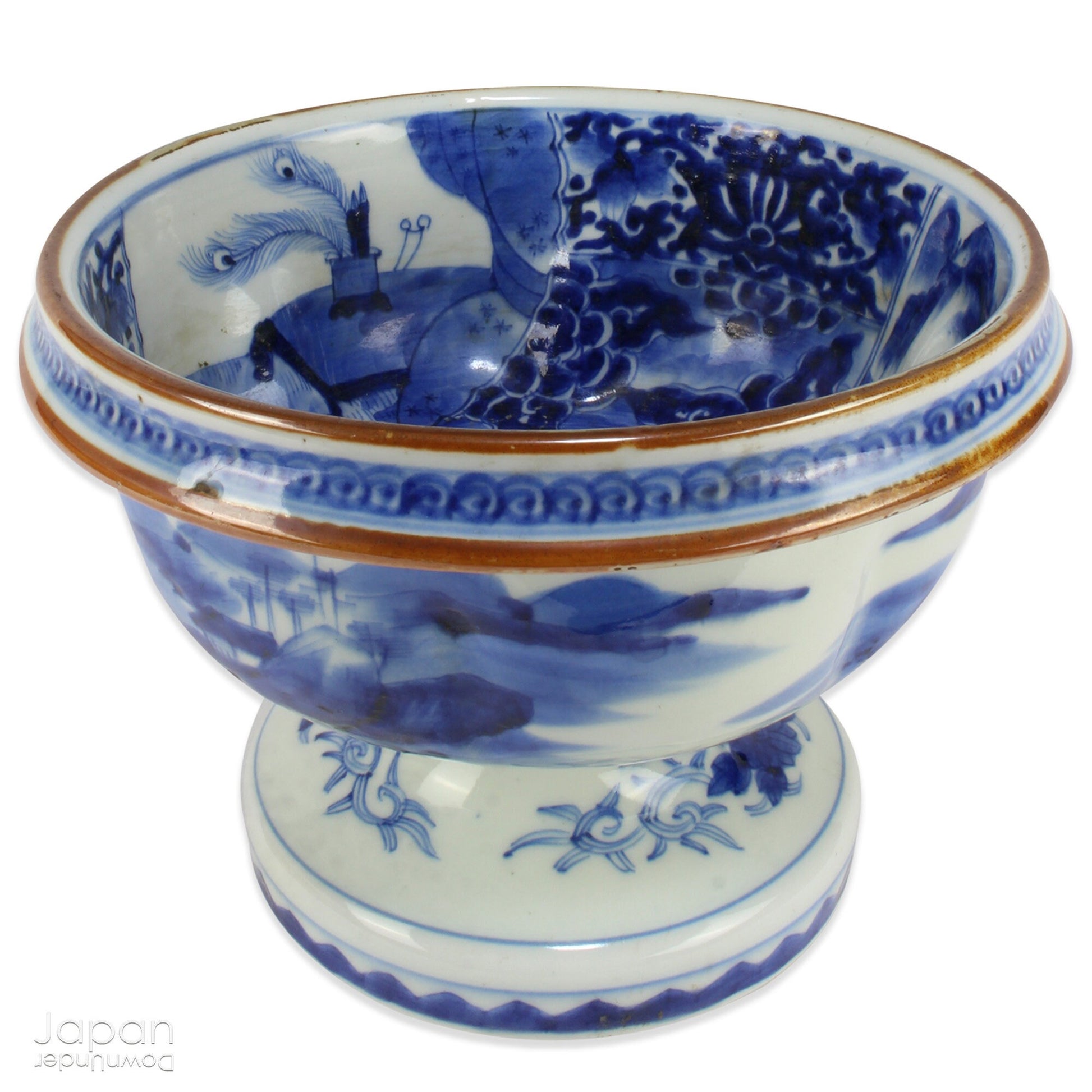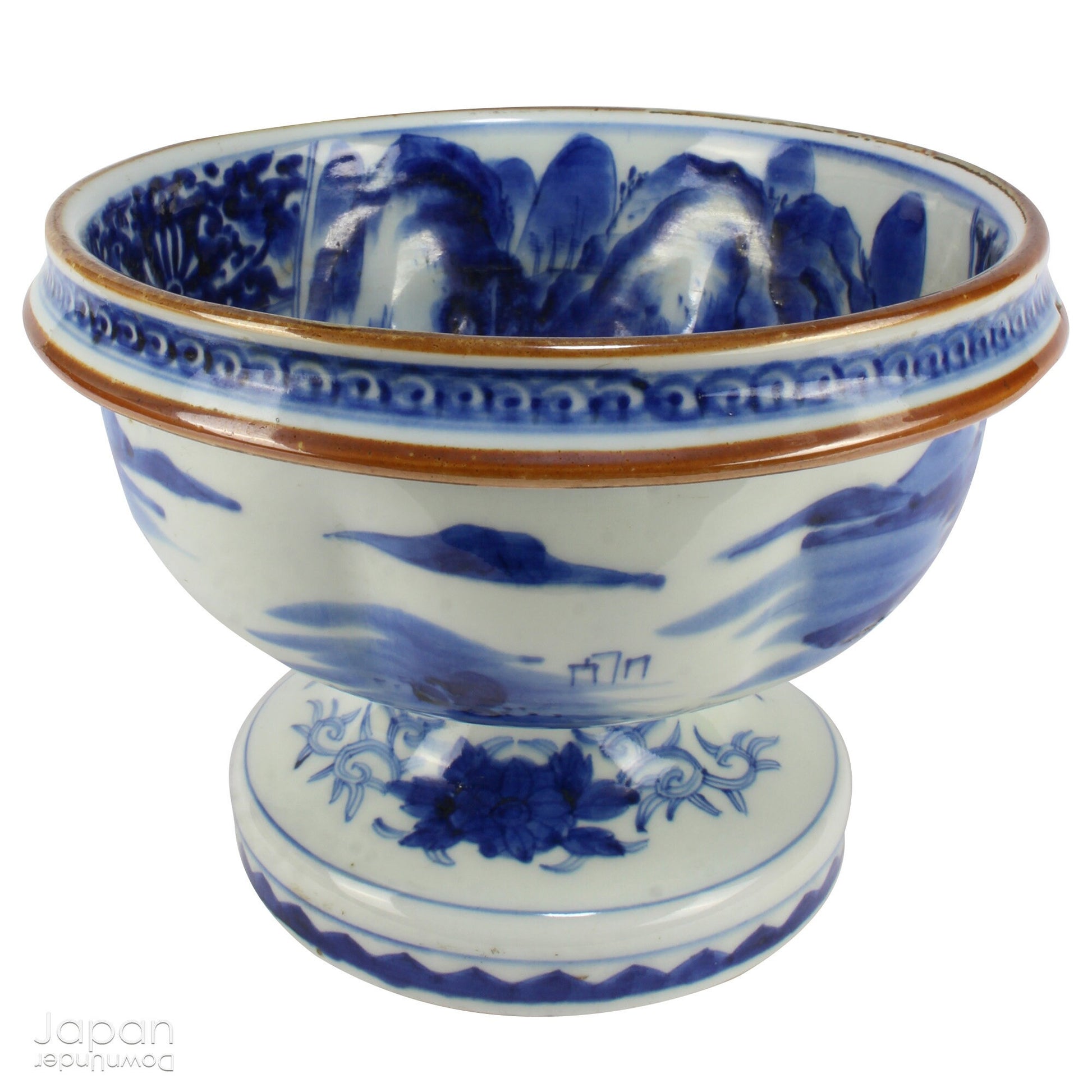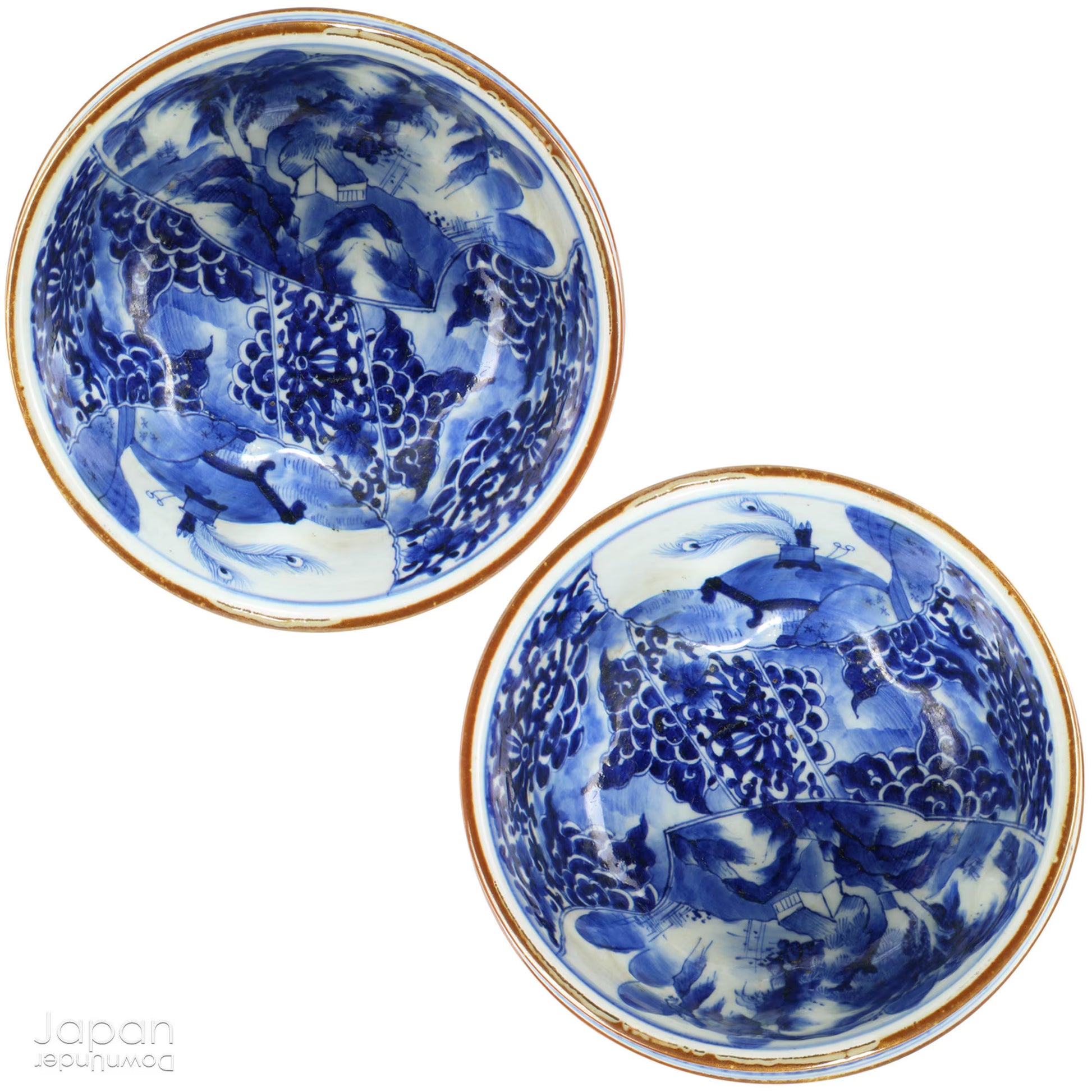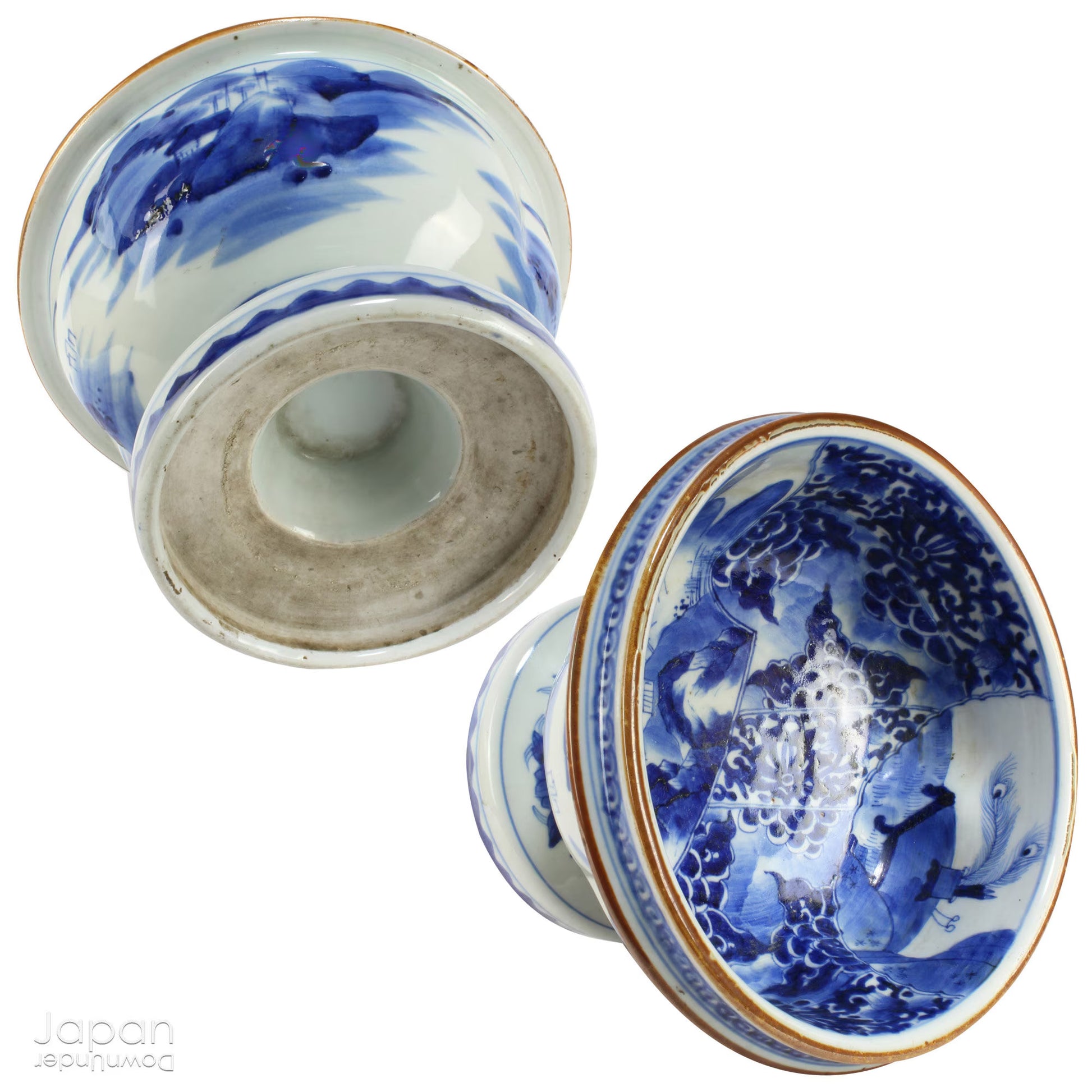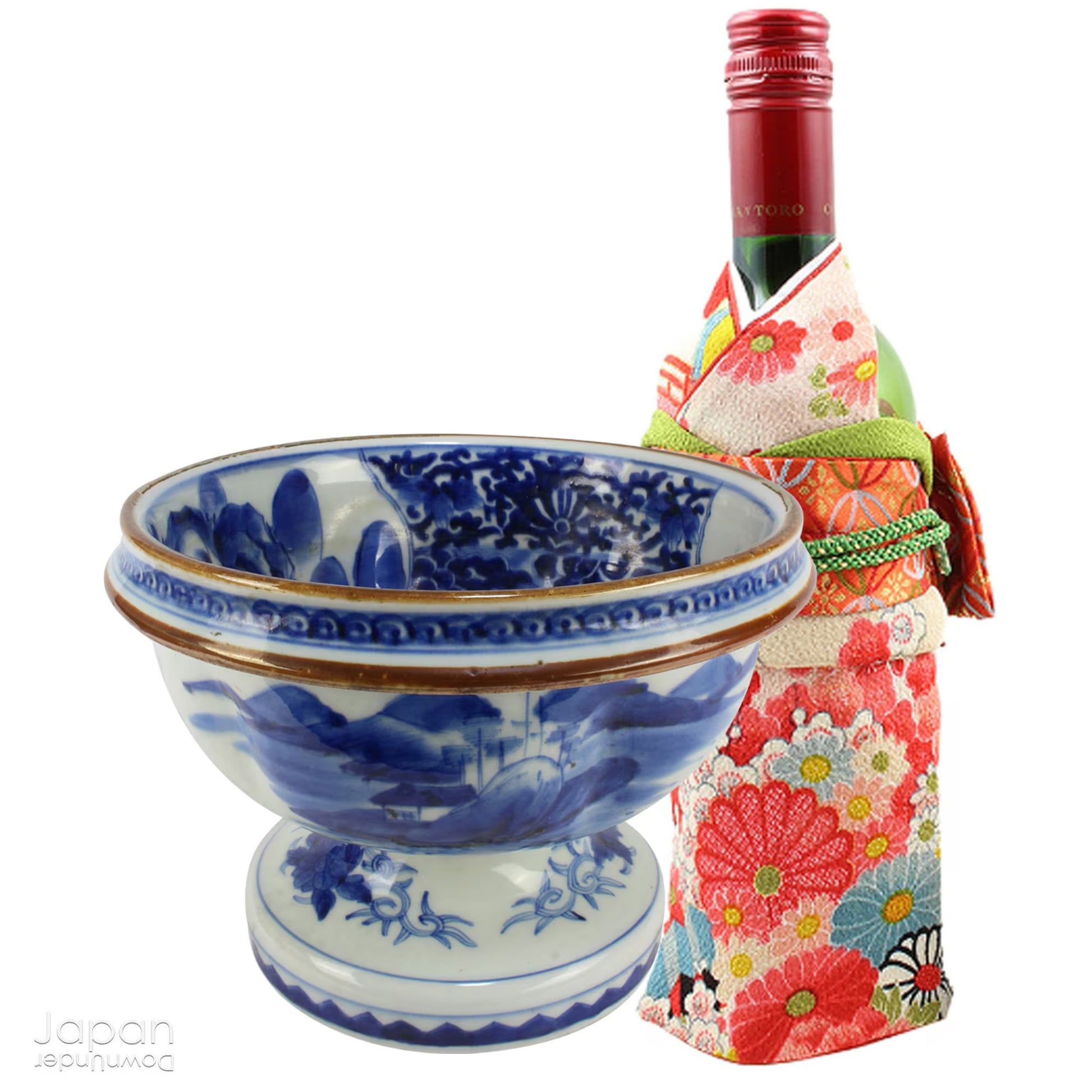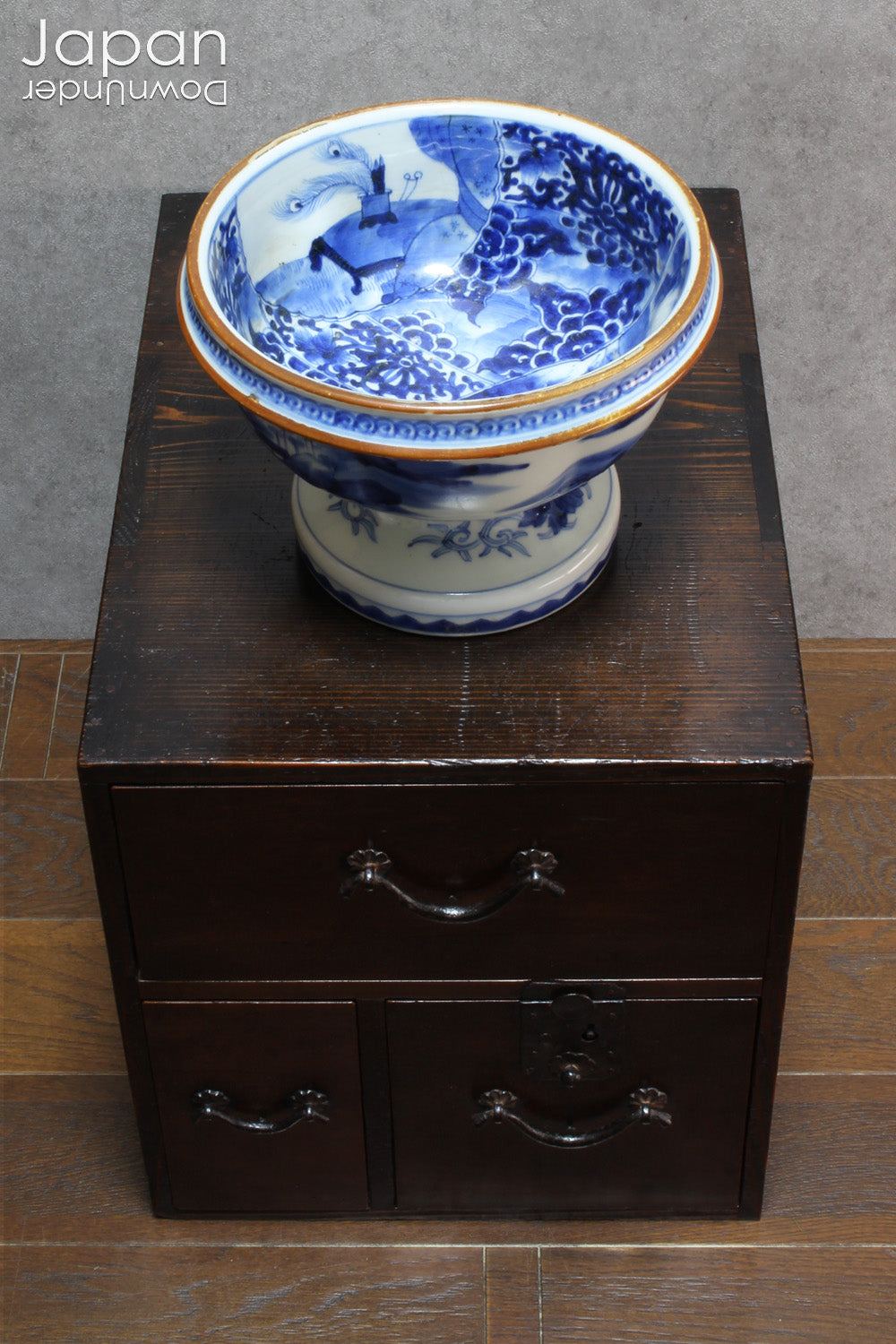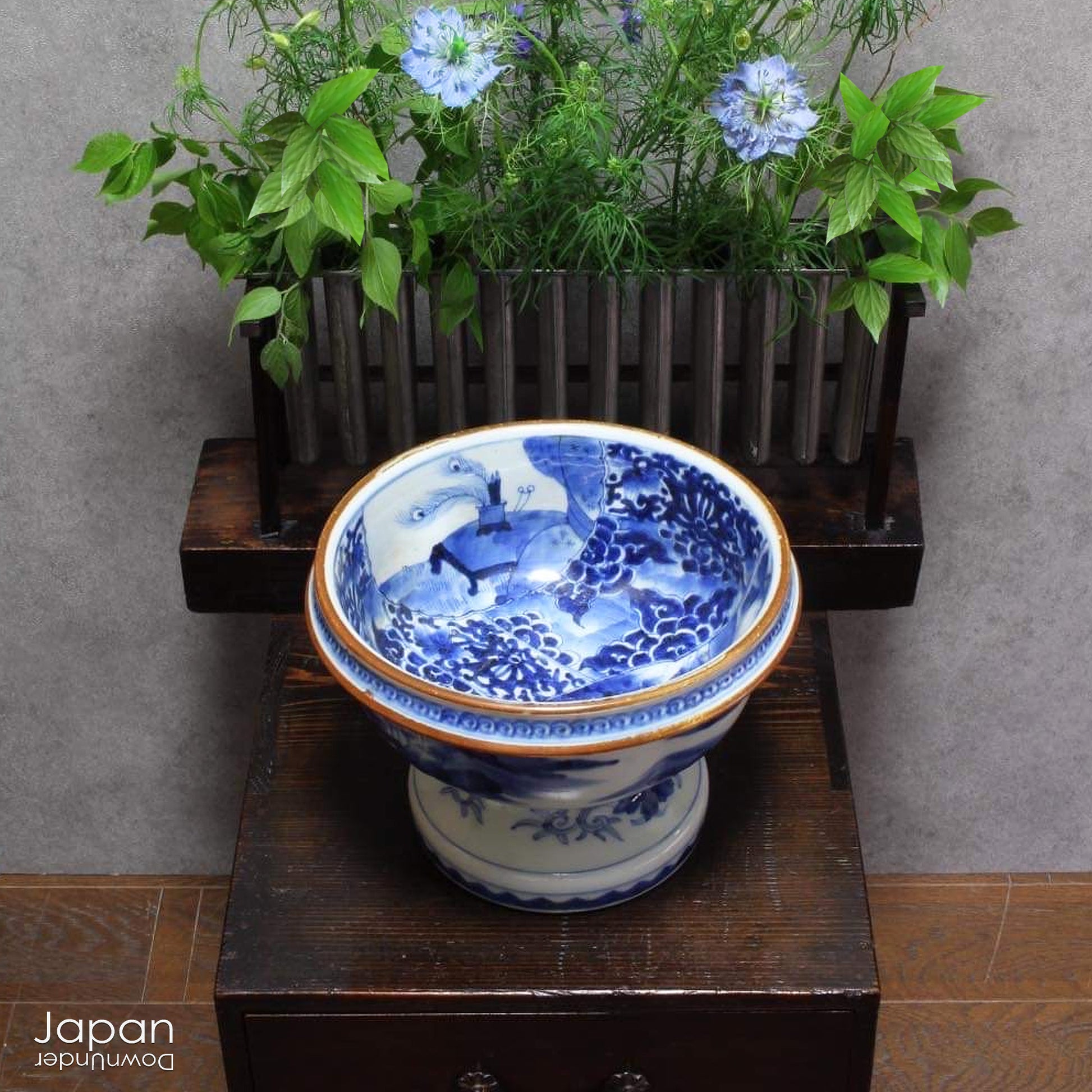JapanDownUnder
hand painted imari footed bowl - blue and white antique pottery
hand painted imari footed bowl - blue and white antique pottery
Couldn't load pickup availability
Love Japanese Style Like We Do
Elevate your home decor with this stunning antique blue and white Imari bowl on a stand. This rare and elegant piece features intricate hand-painted designs, both inside and out, showcasing craftsmanship that will captivate and enchant. Add a touch of sophistication and timeless beauty to any space with this exceptional treasure.
A Glimpse into History: The Haisen Bowl
This remarkable Imari bowl is a haisen - a traditional basin once used in Japan to hold water for rinsing sake cups during the ritual of kenshu. In Japanese culture, it was believed that sharing a sake cup allowed people to better understand each other’s feelings. After drinking, the sake cup would be rinsed, turned upside down, and gently floated in the haisen, awaiting the next participant in the exchange. The haisen was not only a functional vessel but a key part of a deeply symbolic ceremonial process that fostered connection and mutual understanding.
Sake, a revered product made from rice, has been integral to Japan’s culture throughout its recorded history. Since rice is the country’s staple food, sake holds a special place in Japanese tradition. It requires more effort to produce than any other rice-based item, which is why it is offered to the gods on the kamidana, the household Shinto altar. This reverence for sake has inspired centuries of beautiful ceremonies, further elevating the significance of items like the haisen that played a role in sake drinking rituals.
Over time, haisen basins evolved from their functional purpose to be admired for their stunning design. During the Edo era, they became cherished for their aesthetic beauty and were often used purely for showcasing delicate sake cups floating in the water. This particular haisen bowl, with its majestic size and intricate details, is a rare find that not only exemplifies the artistry of the period but also embodies the rich cultural significance of sake in Japan.
A Masterpiece of Design
This is a very large and impressive haisen bowl, measuring 22 cm (8.7”) in diameter - significantly larger than typical pieces that range from 14 cm to 17 cm (5.5” to 6.6”). It is crafted from sometsuke porcelain and features delicate, hand-painted botan (peony) flowers, a serene sansui landscape with trees, mountains, a hut, and flowing water. A stunning display of indigo blues brings these beautiful scenes to life. The interior of the bowl is a work of art in itself, while the outer rim is adorned with a circular swirl pattern, bordered by two subtle tan lines for a refined finishing touch.
This bowl is a unique piece, beautifully decorated both inside and out. Typically, the inner decoration would take center stage, but in this case, the artistry extends to the exterior as well. The outer surface features a stunning Sansui landscape pattern around the edges,
showcasing intricate details that elevate its beauty. At the foot of the stand, a delicate peony flower design adds an elegant touch, while a charming border accent runs around the bottom of the stand, completing the piece with grace and style.
Condition and Age:
This Meiji era Imari bowl is in good condition for its age, showing only light surface scratches and natural wear. There are no cracks or chips, though some slightly rough areas in the glaze and a small dent at the rim are simply a result of the firing process, adding to its charm and authenticity.
A Statement Piece for Any Collection:
With its striking design and historical significance, this antique haisen bowl makes a remarkable display piece. Whether showcased on a mantel, a dining table, or as part of a curated collection, it will undoubtedly become a conversation starter, offering a glimpse into Japan’s rich cultural heritage. Its elegant design and timeless appeal ensure it will be cherished for generations to come.
- measures around 22 cm (8.7”) in diameter at widest point x 16 cm (6.3”) tall
- weighs 2,250.
(listing for blue and white bowl on stand only)
SHIPPING INFORMATION
- please read our shipping notes in shipping policy.
- we use recycle packaging wherever possible and wrap for safety, rather than appearance!
ABOUT OUR VINTAGE AND ANTIQUE ITEMS
We list pieces we feel are worthy of display. There may be scratches, dents, fading and signs of wear and tear. We try to explain the condition of each item exactly, but may miss something.
Information regarding the item and it’s age is obtained from dealers and our personal research. We do our best to give you the correct information but please be aware that we cannot guarantee this information.
Please message us prior to purchase with any questions you may have about our products.
PEONY
Peony (botan) treees were imported to Japan by Buddhist monks around the 8th century. At that time the peony tree was not regarded as a beautiful garden plant but rather as a medicinal plant. Over the next few hundred years, peonies were appreciated more as ornamental plants and were planted in court gardens and temples. Around the Edo period (1603 to 1868), the cultivation of peony trees became widespread. By the 1890's several large nurseries began to appear in Japan and they started to export large amounts of peony to the United States and Europe.
The flower of the peony tree is known as the "King of Flowers". In Japan, it is a symbol of good luck, honor, bravery and ageless beauty. Sometimes peony flowers are used to decorate wedding halls to promote good luck and good fortune for newlyweds It is a popular flower in tattoos and has a happy-go-lucky, casual devil-may-care meaning.
Peony flowers were used as a common motif in a range of traditional Japanese art forms. They were used in Japanese Ukiyo-e (woodblock prints) and in silk screening on materials such as silk and paper.
Share










